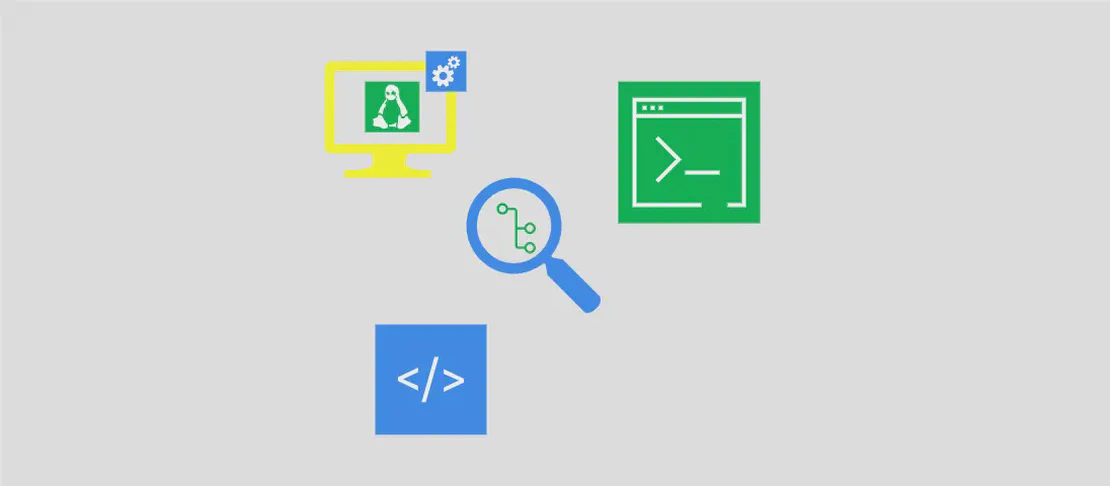
How to use the command 'pacdiff' (with examples)
- Linux
- December 17, 2024
pacdiff is a maintenance utility specifically designed to aid system administrators in managing the configuration files created by the pacman package manager on Arch Linux and its derivatives. These files typically include .pacorig, .pacnew, and .pacsave, generated during package updates that may necessitate manual user intervention to ensure proper system configuration. In essence, pacdiff streamlines the process of merging and reviewing potential configuration differences that arise with system updates.
Use case 1: Review files that need maintenance in interactive mode
Code:
pacdiff
Motivation:
One of the primary scenarios where you’d want to run pacdiff without additional flags is when you need to perform a general check of your system’s configuration files after applying updates. Running it in interactive mode allows you to go through each file at your own pace, ensuring that crucial configurations are not left unresolved which could lead to system misbehavior or security issues.
Explanation:
pacdiff: Invokingpacdiffalone initiates the process in interactive mode, defaulting to use an internal list of possible configuration files generated bypacman. This means it will scan the system for the relevant.pacorig,.pacnew, and.pacsavefiles and allows the user to view and decide on the action for each file through an editor or pager.
Example Output:
Upon running pacdiff, you might see something like the following:
==> Reviewing /etc/package.conf.pacnew
# Opening configuration file for review...
diff --git a/config.original b/config.new
index a78d9f5..b53a9ab 100644
--- a/config.original
+++ b/config.new
@@ -2,6 +2,7 @@
+ New settings added to enhance performance.
Use case 2: Use sudo and sudoedit to remove and merge files
Code:
pacdiff --sudo
Motivation:
Utilizing pacdiff with the --sudo option is crucial when dealing with system-wide configurations that a regular user might not have permission to edit. This prevents permissions issues when you need to modify and save changes to critical system files usually residing in system directories like /etc.
Explanation:
--sudo: This option instructspacdiffto execute with elevated privileges, making it possible to edit and merge files that are owned by the root user. It negates the need to manually prependsudoto each command during the interactive session.
Example Output:
==> Using sudoedit to review /etc/package.conf.pacnew
# sudo privileges invoked. Processing the configuration file...
diff --git a/config.prev b/config.current
index 1234abcd..5678dfgh 100644
--- a/config.prev
+++ b/config.current
@@ -8,3 +8,5 @@
+ Permissions have been adjusted as per new configurations.
Use case 3: Review files needing maintenance, creating .bakups of the original if you (O)verwrite
Code:
pacdiff --sudo --backup
Motivation:
Backing up configurations before overwriting them is a cautious approach that can prevent accidental loss of important settings. This command appeals to system administrators and cautious users who want the safety net of configuration file backups before making permanent changes.
Explanation:
--sudo: Ensures that the operation can modify system configurations that require elevated permissions.--backup: Creates a.bakbackup of the original configuration file if the user chooses to overwrite it. This backup can be used to revert changes in case something goes wrong, vastly lowering the risk during config management.
Example Output:
==> /etc/package.conf.pacnew will be backed up before merging
# Backup created as /etc/package.conf.original.bak
diff --git a/config.backup b/config.updated
index 9abcf241..adb520df 100644
--- a/config.backup
+++ b/config.updated
@@ -3,5 +3,5 @@
# Backup and new configuration successfully managed.
Use case 4: Use a specific editor to view and merge configuration files (default is vim -d)
Code:
DIFFPROG=nano pacdiff
Motivation:
Some users may be more comfortable with a particular text editor and prefer to use it over the default vim -d. By setting the DIFFPROG environment variable to an editor of their choice, users can streamline their workflow and use tools they are familiar with, enhancing productivity and minimizing mistakes.
Explanation:
DIFFPROG=editor: This allows the user to define a custom editor for merging and viewing differences between configuration files. In the example,nanoreplaces the defaultvimfor users who may findnanoeasier to use.
Example Output:
==> Reviewing /etc/package.conf.pacnew with nano
# Opening file in nano editor...
+ 'Nano' editor interface is shown for modifications
Use case 5: Scan for configuration files with locate instead of using pacman database
Code:
pacdiff --locate
Motivation:
This is useful in cases where the standard pacman database may not successfully identify all configuration files, perhaps due to database corruption or other anomalies. Using locate as an alternative can potentially identify additional configuration files, providing a more exhaustive search.
Explanation:
--locate: This flag directspacdiffto employ thelocatecommand to identify relevant configuration files rather than relying on thepacmandatabase. It expands the search capabilities for listing files that require attention.
Example Output:
==> Scanning files with locate
# Found additional configurations using locate:
- /etc/another_package.conf.pacnew
- /etc/yet_another_package.conf.pacsave
Use case 6: Display help
Code:
pacdiff --help
Motivation:
Understanding all available options and syntax is essential for efficiently using any command-line utility. Consulting the help documentation can provide users with insights into advanced features and usage patterns, potentially solving complex problems more easily.
Explanation:
--help: Outputs information on how to usepacdiff, listing available options and brief descriptions of each, along with general usage patterns. It is particularly useful for new users or those trying to brush up on their additional capabilities.
Example Output:
pacdiff - maintenance utility for .pacorig, .pacnew, and .pacsave files
Usage: pacdiff [options]
Options:
--sudo use sudoedit for editing configuration files
--backup create a backup of the original before overwriting
--locate use locate instead of pacman database
--help display this help and exit
Conclusion:
The pacdiff utility serves as an essential tool for system administrators and users alike on Arch Linux systems, effectively facilitating the management of configuration files that require attention post-package updates. With various options allowing for privilege escalation, backup creation, alternative searching methods, and custom editor usage, pacdiff offers a versatile approach to handling the intricacies of system maintenance and ensuring stability through proper config file handling.


